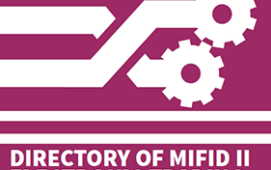
 By Struan Lloyd, managing director, head of S&P Global Market Intelligence.
By Struan Lloyd, managing director, head of S&P Global Market Intelligence.
Recently, we conducted our 6th annual Cappitech Global Regulatory Reporting Survey that aims to capture the pulse of the trade and transaction reporting industry. The survey results were released at the end of 2023 and revealed that lack of resources and poor data quality are the main regulatory reporting challenges faced by the industry.
This dual challenge not only underscores the industry’s struggle with limited available assets, but also emphasises the critical role that high-quality data plays in meeting regulatory requirements. Addressing these challenges becomes imperative for the industry to enhance its reporting capabilities, streamline operations, and fortify its regulatory adherence.
In addition, we invited more than 10 industry thought leaders to contribute their perspectives on the anticipated regulatory reporting trends in 2024 in our annual trends and predictions blog. Many of these industry experts echoed and addressed the topics raised in the survey.
Three Key Survey Findings
Data Quality
When it comes to data quality, just 19% of our survey respondents believe their data quality is ‘very high’ and more than half identify remediation of existing data as a key capability. Compromised quality of data creates impediments in achieving accurate and timely regulatory compliance. Ultimately, good data drives effective regulatory reporting and firms need the right tools and resources to achieve this, especially as regulators continue to scrutinise the data.
Multiple trading, static data platforms across financial institutions make it difficult to manage a golden source of data. We are seeing more and more customers push for a consolidated data lake to better manage this issue. If this can be achieved, this will reduce the effort and resources required to meet regulatory reporting needs.
Resourcing
The survey found that resourcing continues to be a challenge with less than half the market feeling appropriately resourced. The insufficiency of resources poses constraints on the efficient execution of reporting processes. This is likely driving an increase in the use of vendors and third parties as firms search for the right expertise and economies of scale.
Technology and Collaboration
The report also highlights a number of positives in the regulatory reporting space, including that market participants are taking an increasingly collaborative approach to facilitate shared learnings and by doing so are finding value in this community approach around reporting, including leveraging peer knowledge from a regulatory reporting best practice outlook.
The report also shows the desire for consistency in reporting, and a commitment to leveraging technology, including artificial intelligence (AI) and machine learning (ML). In part, this is reflected in the growing use of vendors, with 75% now using a vendor in some capacity, up from 64% in 2022. Interestingly, more buy-side institutions are considering bringing back their delegated reporting in-house to regain control and enhance visibility in the reporting process.
Our customers, for instance, can leverage our technology and platform to provide delegated reporting to counterparties from a central dashboard. Of course, while customers can delegate the reporting task, the obligation remains theirs, emphasising the importance for each customer to take ownership of their reporting process.
Conclusion
The Cappitech survey shows a shift in focus from simply hoping to meet regulatory requirements and deadlines, to a more focused and strategic view that encompasses multiple jurisdictions and a bottom-up approach to identifying resourcing and data quality challenges and fixing them ahead of time.
This is especially important as the landscape of regulatory changes poses a significant congestion risk in 2024, particularly with simultaneous alterations in EMIR (European Market Infrastructure Regulation), JFSA (Japan Financial Services Agency), MAS (Monetary Authority of Singapore), and ASIC (Australian Securities and Investments Commission) regulations within a single year.
This convergence introduces a substantial delivery risk, as organisations grapple with the intricate demands of complying with multiple evolving frameworks. Adding to the complexity, the introduction of ISO 20022 and the Unique Product Identifier (UPI) further compound the challenge, forming an expansive roadmap that customers must navigate to ensure seamless compliance.
The intersection of these regulatory shifts underscores the need for strategic planning and agile adaptation in the face of an evolving and intricate compliance environment. This increased maturity within the market is very welcome and will lead to better, more effective regulatory reporting that more closely meets the regulators’ monitoring and oversight needs.
To see the full survey results report, click here and to see the trends and prediction blog click here.
Subscribe to our newsletter





